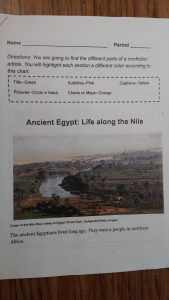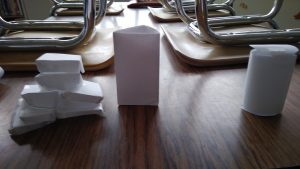Students have finished comparing the geography of Mesopotamia and Egypt. They analyzed how they were similar (e.g. desert regions, river civilizations, annual floods) and different (e.g. one river vs. two, natural defenses for Egypt vs. flat plains of Mesopotamia). We have also traveled to the western hemisphere to examine the geography of the Maya region by looking at its natural resources, natural defenses and geographic features.
Last week we spent the afternoon seeking geocaches in different locations throughout Brunswick. The students seemed to enjoy the experience, and they successfully applied their knowledge of mapping and geographic directions to this new situation. A big thank you to all the parents who helped chaperone, as this field trip wouldn’t have been possible without your assistance.
Now that the students have seen a variety of places in town, they have begun the research phase. Each student is becoming an expert on one business, building or other feature of Brunswick. Mr. Levy and I have taught them how to develop questions and take bullet notes; we modeled this process for them and then asked them to practice note taking independently. During class they have been taking notes on their topics. Next week, I hope that students will begin turning their information into either a brochure, an interactive visitor’s map, a newspaper article or a one-minute documentary (with a written script).


